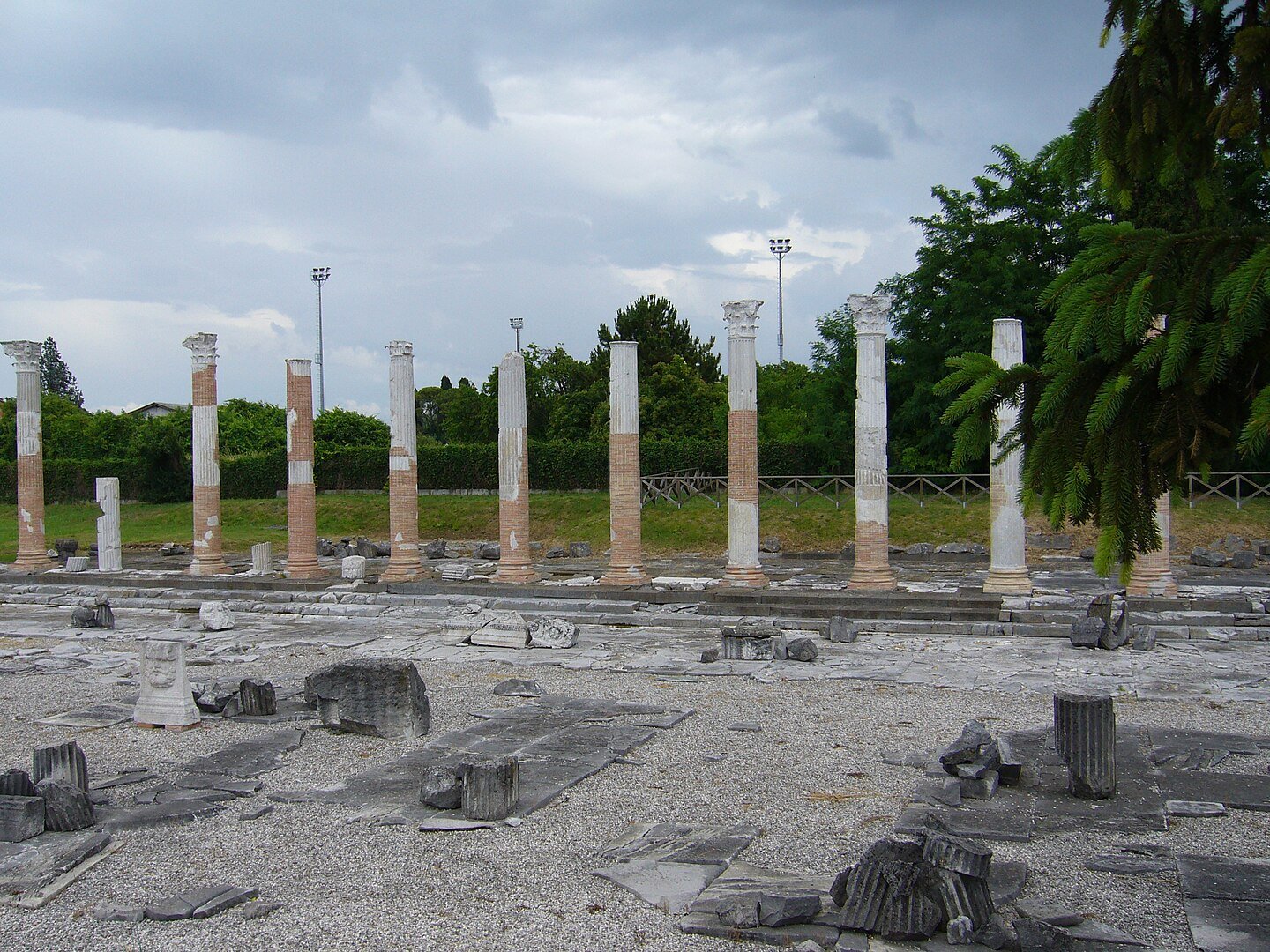

Archaeologists have uncovered an early Christian church in the ancient Roman city of Aquileia, located in northeastern Italy. This grand basilica, constructed during the reign of Emperor Justinian I in the 6th century, offers remarkable insights into the region’s religious and geopolitical significance during Late Antiquity.
Aquileia is a small town in northeastern Italy with around 3,000 residents at the present time. It might seem rather quiet now, but its history is extraordinary. Long ago, in 181 BC, the Romans established it as a military base. Over time, it became one of the most important trade and economic centers in the Roman Empire.
The town’s location played a major role in its success. It sat at the end of the Amber Road, a major trade route, and connected the Roman Empire to what is now Austria. This made it a key spot for trade and military activity.
Early Christian basilica in #Aquileia discovered: S. Groh & his team uncovered a 4th cent. church, expanded over time into a three-aisled transept basilica. Highlighting ties to the Eastern Roman Empire’s architectural style during Justinian I @FWF_at https://t.co/KUnt35kxyV pic.twitter.com/1nAQdVo715
— Österreichisches Archäologisches Institut (@oeai_oeaw) November 20, 2024
The newly discovered basilica is large and built in a grand Byzantine style. It provides valuable information about the religious growth and strategic importance of Aquileia during ancient times.
Researchers used advanced tools to find the basilica. They conducted geophysical scans and drilling near the Via Annia, an important trade route that linked Aquileia to cities such as Milan and Rome. These efforts uncovered a 4th-century church, which was later expanded into a large, three-aisled basilica.
Archaeologist Stefan Groh called this the most significant find in decades of research in Aquileia. Experts believe the basilica was constructed in the mid-6th century, during the reign of Emperor Justinian I, who led the Eastern Roman Empire from 527 to 565 AD.
The basilica’s design shares similarities with religious buildings from Justinian’s era found in places like Egypt, Turkey, Greece and the Balkans. This discovery suggests Justinian was strengthening his control and spreading Byzantine culture in Italy through large-scale construction projects.
The basilica’s unique design, with its transept and apses, is a hallmark of Eastern Roman architecture. Similar structures have been identified in regions such as Bethlehem, Albania, and Turkey’s Lycian coast.
In Aquileia, this grand basilica was more than a religious site—it was a statement of power, reflecting Emperor Justinian’s determination to reclaim and stabilize the Upper Adriatic.
The southeast-facing orientation of the basilica holds symbolic meaning. It points toward Constantinople and Jerusalem, signaling a direct challenge to the Arian Goths who had dominated the area before their expulsion.
This discovery was made possible through funding from the Austrian Science Fund. The findings reveal how closely religion and architecture intertwined with the political and military strategies of the Byzantine era. Structures such as this basilica served as tools of influence, blending faith and authority to reinforce imperial control.
The basilica’s reach extended beyond its walls. Its design inspired nearby churches, such as the episcopal church in Teurnia, Austria, which adopted similar features in the 6th century.
